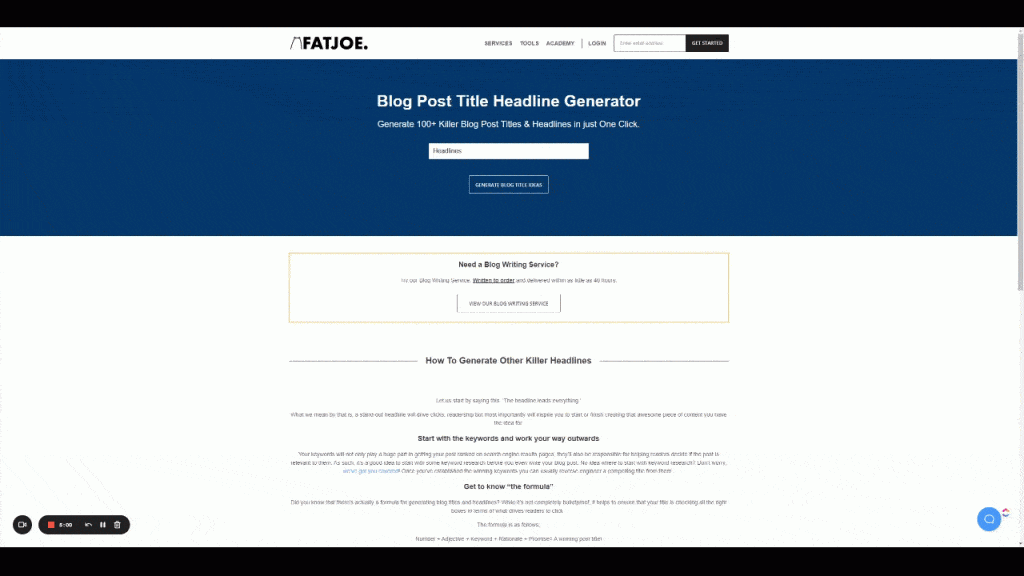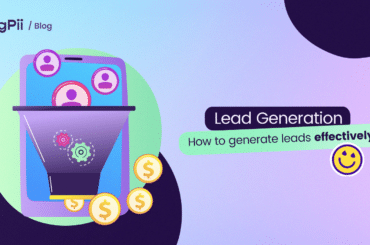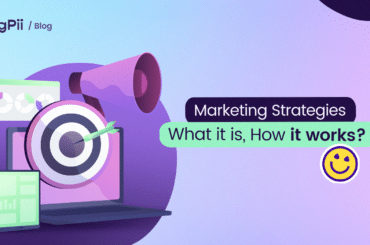Not everyone who visits your blog will read your articles. But almost everyone visiting your blog will read at least one or two headlines.
According to Copyblogger, 80% of people read the headline, but only 20% will go ahead and read the rest.
Most people don’t realize that they are losing most of their traffic because of fluffy and unclear headlines.
Even if your article is insightful, if the headline is not great, then don’t expect everyone who visits your blog to read the article. Your headline is the best place to start if you want to hook your readers.
Think about how many headlines you read yesterday or before you got to this article. What makes you click on a headline and read the whole article? That’s what we’re going to be talking about in this article.
Without further ado, let’s delve in…
3 Elements of a Killer Headline
- Use a hook
The first thing you must do when trying to write a good headline is to hook your reader from the beginning.
You need to win your readers’ attention in a matter of seconds because as humans scroll searching for something, they skim the content, which includes headlines.
Does it, I mean I’m writing a blog about headline because I wanted to appear on Google but what if I don’t? Would SEO still matter? I’m ‘Hooked’.
- Be extra specific
When readers search for something, they have a need in their mind that they’re searching for, so their search query reflects that.
If you want to earn the click of that reader, have to let him know that you’re talking about that specific niche that he’s searching for.
Want to test your pricing on Shopify? Easy here what to do and not to do and how to exactly go about it.
That’s being specific by giving the users the reason why they should click on that headline; it’s because once they’re finished, they’ll know exactly what to do and what to avoid.
- Create curiosity
Try to make your blog enticing for the reader to click on, and give the reader a reason to why he should be clicking on your headline.
Now you can generate curiosity by asking your reader a question that he should read the article if he wants to know the answer:

What? What should I do? This is precisely what you need to create in your readers’ minds that feel they’re missing out on something.
You could offer a benefit to your reader, make him curious about what is it that you offer that you can’t miss.
In the end, there’s no single anatomy to a good headline; some headlines can use multiple tricks while others can use one or two.
The essential thing in a headline’s anatomy is that it fits what your readers are looking for when searching.
If you’re a business with a blog, read what your competitors are doing, see what they are falling short on, and build up from there.
There’s no need to reinvent the wheel when creating headlines. You just need to create demand using the headline.
Now with that out of the way, let us talk about ten tips that could help you build the ultimate headline for your content.
10 Tips To Keep Your Headline Engaging
- Cut out the fluff, be straightforward and clear
Readers want to know what they will get if they read your content, and adding vague words to try and make users curious will backfire hard.
The more straightforward you’re, the easier it’s for the users to see that they’re likely to get value out of the blog, so they decide to invest the time needed.
Here’s an example of a blog I wrote recently about JTBD interviews and how you can use them to create your customer journey map.
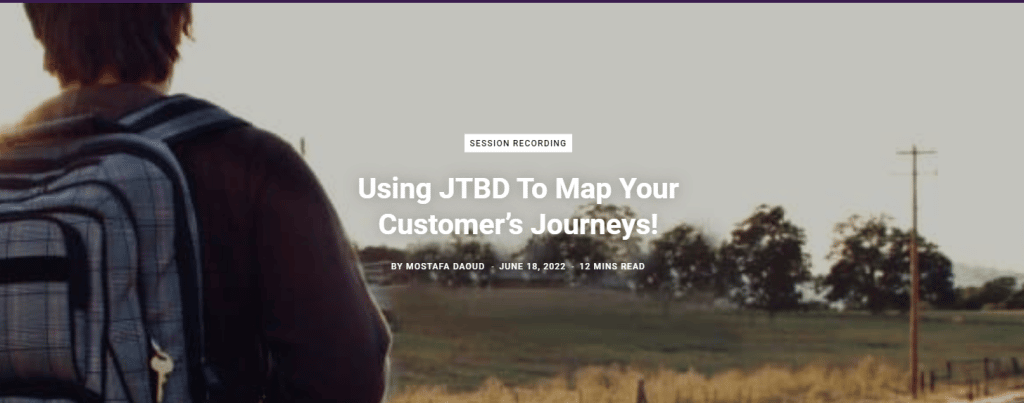
You can see what the blog is all about and what benefits you will get by reading it; I could’ve said, “You won’t believe what JTBD can do for your business.” But it sounds vague and wrong.
Here’s a bad example of a headline that doesn’t explain anything and leaves you up in the air wondering what it means.

- Headlines should be easy to understand
Are you familiar with the elevator pitch? It’s when you have to pitch something in 30 seconds and sell it to the recipient.
You have to be able to get your headline across in like 5 seconds, and you need to pitch to your reader and convince them you’re the right blog to read.
Can you do that with a complex headline? Probably not. Your reader will skip to the following headline because you haven’t told him what you’re headline is about.
Stay simple and easy to understand, don’t overcomplicate or use jargon to sound smart or fancy; they’ll skip you.

As you can see from this headline that I got from Copyblogger, in one sentence, I could tell what I was getting myself into without thinking.
Here is an example of what your headlines should look like if you want to get clicks.

- Make use of numbers
In her blog “5 Reasons Why Using Numbers in Your Headlines Works”, Debra Jason, from the Write Direction, lists five reasons why numbers work like magic in headlines.
The one that I wanted to focus on, which relates to an earlier tip, is the promise of something specific.
Again whenever we know what we’re getting ourselves into, we’re more likely to get into it; that goes for content.
Numbers give the feeling of satisfaction that once you’ve reached no.5, you’re finished and ready to put your newly acquired knowledge into good use.
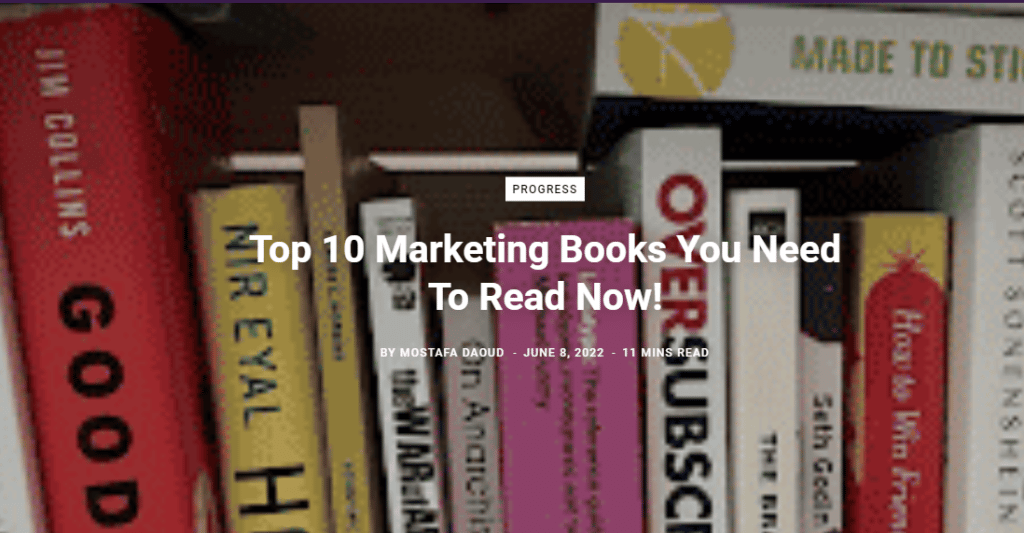
As you can see, I’ve used numbers in some of my previous blogs, and they’ve done exceptional, but don’t take my word for that. Here’s another example from CMI

- Use emotions to your advantage
You’re probably familiar with the term FOMO or fear of missing out. It’s used a lot in marketing to help drive more engagement, conversion, or whatever it’s the business goal.
But fear is an emotion, and since FOMO is a thing, you can use emotions to drive more clicks to your headlines.
As long as you’re not clickbaity about it or making it vague, and people aren’t just clicking because they’re emotional.
Emotional headlines are compelling because we feel like it speaks to us directly without the feeling of it selling us anything.
Here’s an example of an emotional example from TinyBuddah that showcases the powerfulness of emotional headlines.

What are your feelings when you read this? Encouragement, happiness, and comfort. It’s like a nice breather after a long day in the hot sun of life.
- Try using headlines formulas
We’ve all been there, a blank screen, a blinking cursor, and zero ideas about what to write down. Writer’s block is something we struggle with a lot.
And one of the best ways I found out works for me is to use formulas to generate headlines that get me unstuck, and I think it would work for you too.
Hubspot has made an excellent infographic that shows you formulas to use if you’re feeling stuck, and their formulas are good.
Here let’s take one of them as an example.

In this example, they used a combination of a Negative word, an action, and a keyword.
Let’s try and make a headline using this formula. We’ll talk about headlines, so our subject will reflect that.
“Stop Wasting Your Time Writing Bad Headlines, Use This Formula Instead.”
See what we did there? We made a compelling headline that makes you want to click on it in 30 seconds.
Not all of your headlines would be good, so I recommend the following.
Write multiple headlines, take a break, and then write another batch until you have 50 headlines.
Filter them down until you have a few really interesting headlines, then test them on your co-workers to see which ones grab more attention.
- Use trigger keywords like “What, Why, How.”
Using trigger keywords incentivizes the reader to click on the headline because it invokes curiosity, and we humans love to know more.
If you present your reader with a question and then proceed to answer it within your blog, that’s more than enough reason for a click.
That’s why “How-to” blogs are super popular. Because of their overall effectiveness, and not just “How-tos”, other trigger words can yield similar results.

As you can see from this example, Content Marketing Institute makes good use of trigger words in their headlines; they’re evergreen headlines.
- Your headline shouldn’t be too long
I’ll let you on a secret weapon I use to keep my headlines short but powerful to create compelling headlines. It’s “25 Headlines”.
25 Headlines is a website that allows you to write multiple headlines and count the headline’s characters to ensure you’re not going overboard.
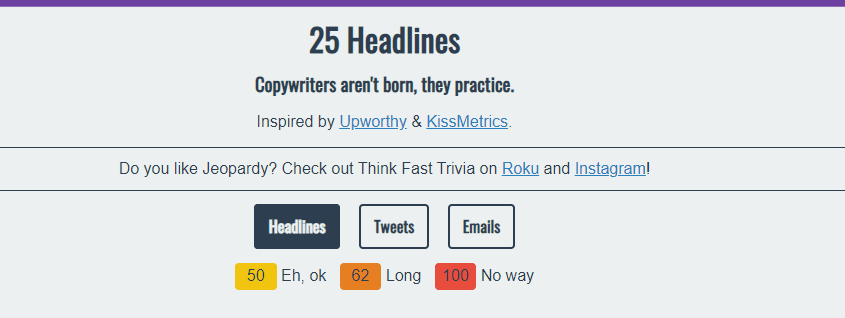
You’re in the clear if your headline is under fifty characters. It doesn’t mean you can’t get over it; it just means aim for fifty or below.
Then you have fifty to sixty-two; you’re good to go, but maybe try and get your headline a bit shorter, and that’s why they give you a lot of space to try to shorten your headlines.
The next level is sixty-two to a hundred, which tells you that your headline is long and you might want to aim for something shorter.
In some places where long headlines aren’t an issue, do your research due diligence to create the optimal headline for your purposes.
A hundred is way too much; if you want to know how long that would be, allow me to demonstrate.
“He Took the Road Less Traveled — You’ll Never Guess What Happened Next To Him, His Entire Family !!!”
Never do that. Never write a headline that’s a hundred characters long, no one would read it, and it’ll just get skipped over.
- Use multiple tips to create the ultimate headline
If you’ve been following our tips till now, you will find a fundamental observation, most of the tips are interconnected, as in you can use multiple tips to create the best headline.
Like you can use numbers and trigger words to have a compelling headline that incorporates multiple tricks altogether.
Here’s an example from Copyblogger where they used numbers with a trigger keyword to make a highly clickable headline

- Avoid clickbait
I guess this should be no surprise, but people hate clickbait titles and usually think of you as a desperate spammy person for doing that.
I want to ask which website gives you the most clickbaity headlines on the internet? I know there’s a lot, but there’s one that jumps into minds often.
Yes, BuzzFeed. They’ve been associated as the masters of clickbait and mediocre content and excelled in what they did.
Here is a screenshot from Google Trends showing BuzzFeed’s fall from grace.
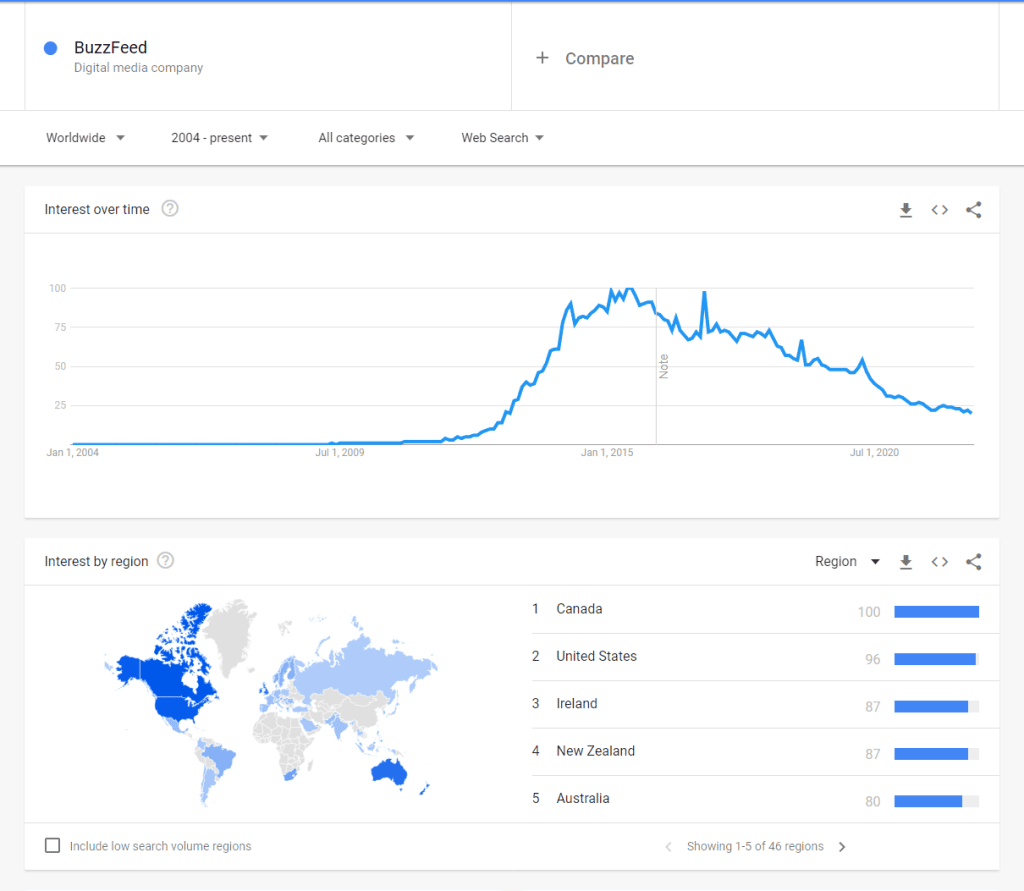
Avoid clickbait at all costs because having an average headline can be better than having a clickbait one.
- Use headline generators
Sometimes we need that extra push to move forward, and sometime that push could be a headline generator that comes in clutch in a writer’s block.
Be careful, not all generators are created equal, and some are better than others, so research what works well for you and what doesn’t.
Here’s a headline generator I use and love because it gives me a lot of choices, Sumo’s headline generator
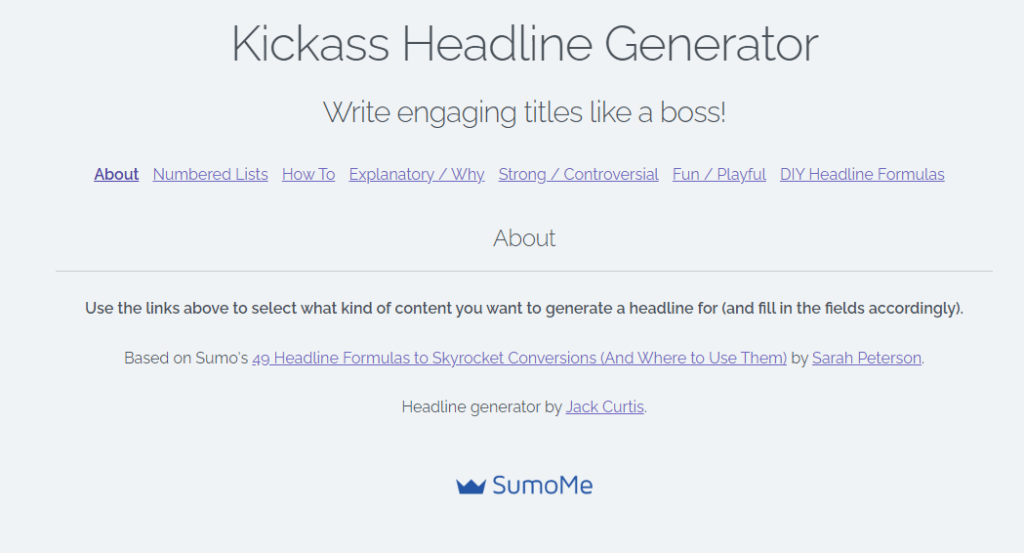
It’s one of the best generators out there; in my humble opinion, it gives you the option to choose between 5 main headline categories ( Numbered Lists / How To – Explanatory – Why / Strong – Controversial/ Fun – Playful / DIY Headline Formulas).
Each of those categories gives you between 6-11 examples of variant headlines, which is a lot; they also give potent headlines.
If you cannot write down any headlines, check their website, generate some examples, and see which headline stands out to you.
Now let’s try and generate headlines for the blog you’re reading and see what the results would be like using headline generators.
I’ve used headline generators for this article, here are my thoughts
I took it upon myself to help you figure out which headline generator would yield the best headlines so you can use it without wasting much time in testing.
I didn’t test every single headline generator out there, but I went through a few popular ones, and some results surprised me.
We’re going to start with probably the most famous one based on the company that created it, Hubspot’s headline generator.
Hubspot’s headline generator
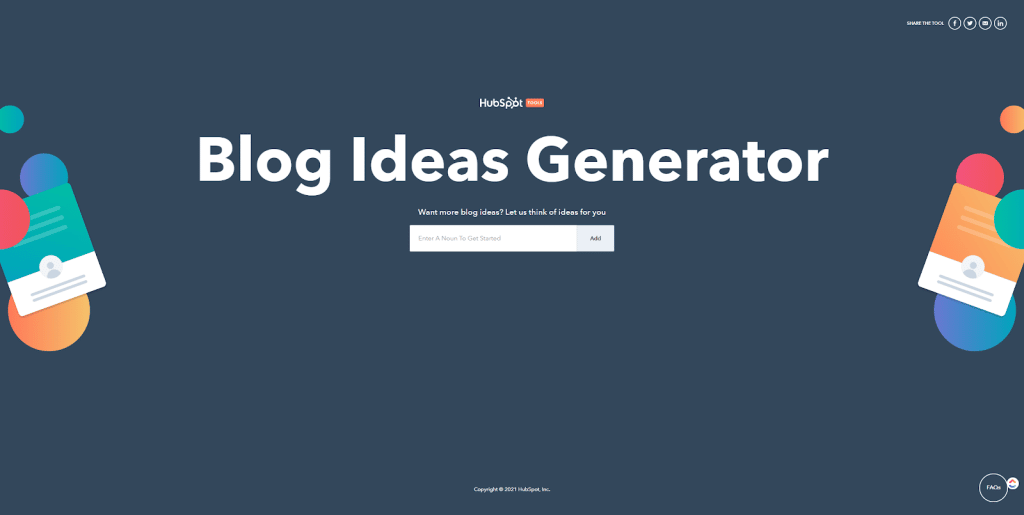
I had high expectations for this tool to be one of the best because Hubspot has been doing marketing for so long that they should’ve perfected this.
But the results were not good, and it has a fundamental issue, which we’ll discuss in a minute.
I used “headlines” as a seed keyword to see what it would give me in terms of headlines, and it gave me five headlines “for free.”
- Headlines: Expectations vs. Reality
- Will Headlines Ever Rule the World?
- The Next Big Thing in Headlines
- Headlines Explained in Fewer than 140 Characters
- This Week’s Top Stories About Headlines
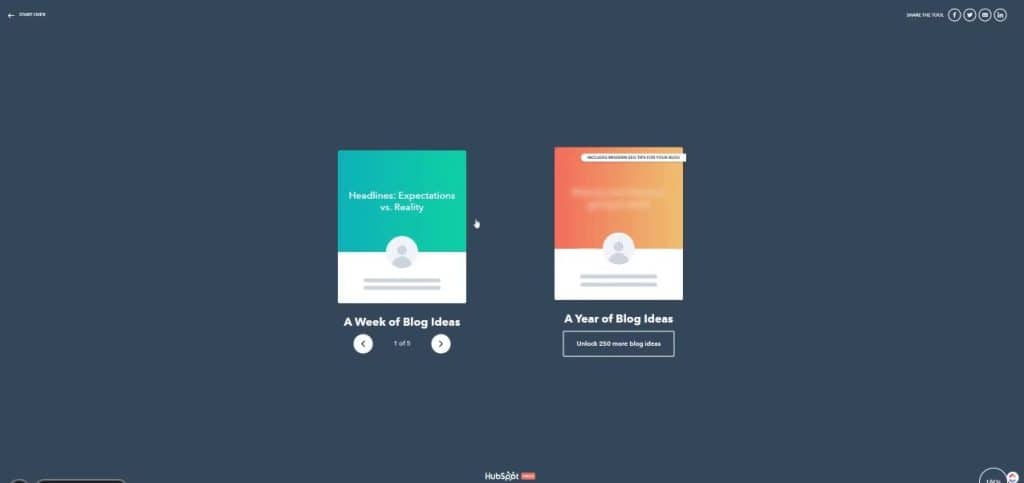
As you can see, none of the headlines is remotely decent; they’re entirely unusable at this point, and I wouldn’t even use them for idea generation.
But if you gave Hubspot your email, they’d send you 250 headlines straight to your email, alongside a sales pitch.
But going off these five headlines, I wouldn’t get the 250 other headlines because if those five are the best, what do other headlines look like?
I’d skip this tool without considering it; it does a terrible job, and it’s not worth your consideration.
Now let’s move on to another one, Potent’s idea generator.
Potent’s idea generator
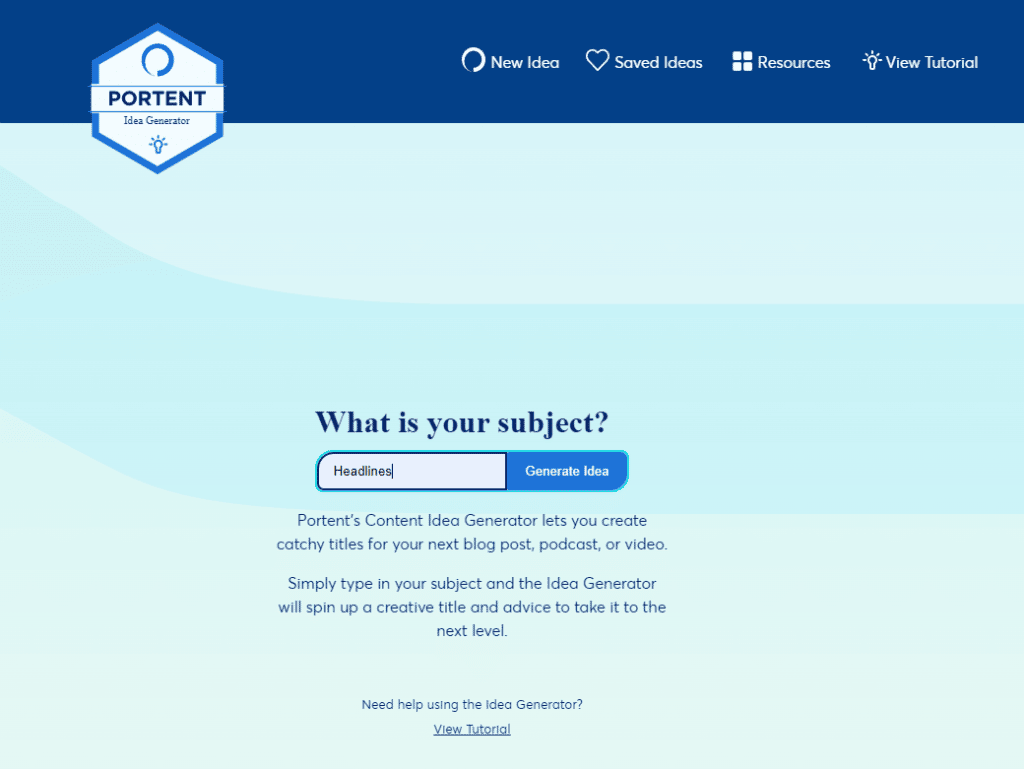
Here’s what I like very much about this tool when you generate a headline, it won’t be usable, but when you click on it, that’s the jackpot.
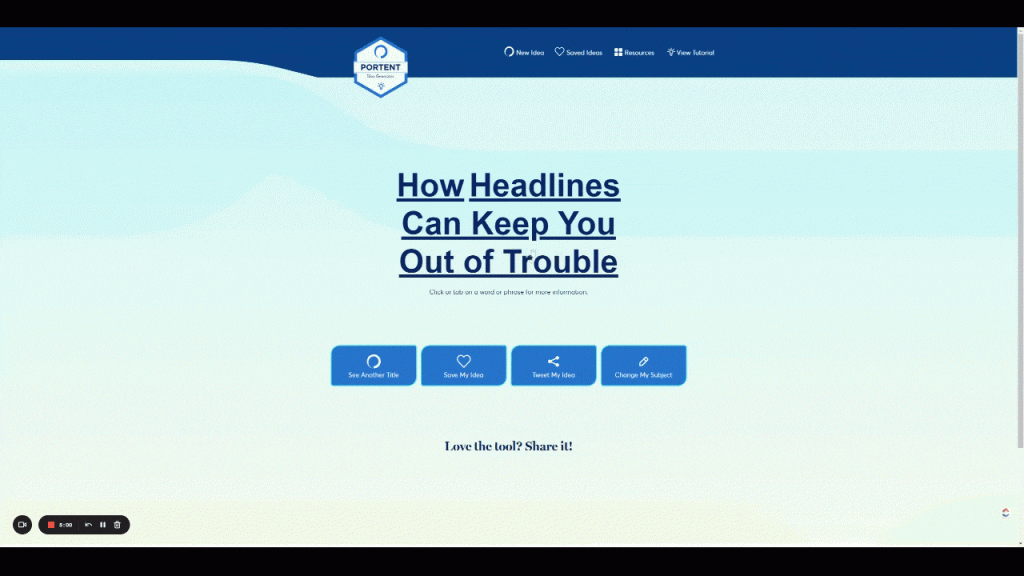
It gives you tips on headline writing, highlights a specific keyword, and tells you why it has chosen it and how you can customize it to fit your needs.
Here are some of the headlines it gave me
- 10 Ways Headlines Can Increase Your Productivity
- Why Headlines is the Best Thing Since Sliced Bread
- 12 Great Articles About Headlines
As you can see, just one headline is usable because it uses numbers and makes sense, but the rest aren’t good, but I’d still use this tool for idea generation.
SUMO’s headline generator
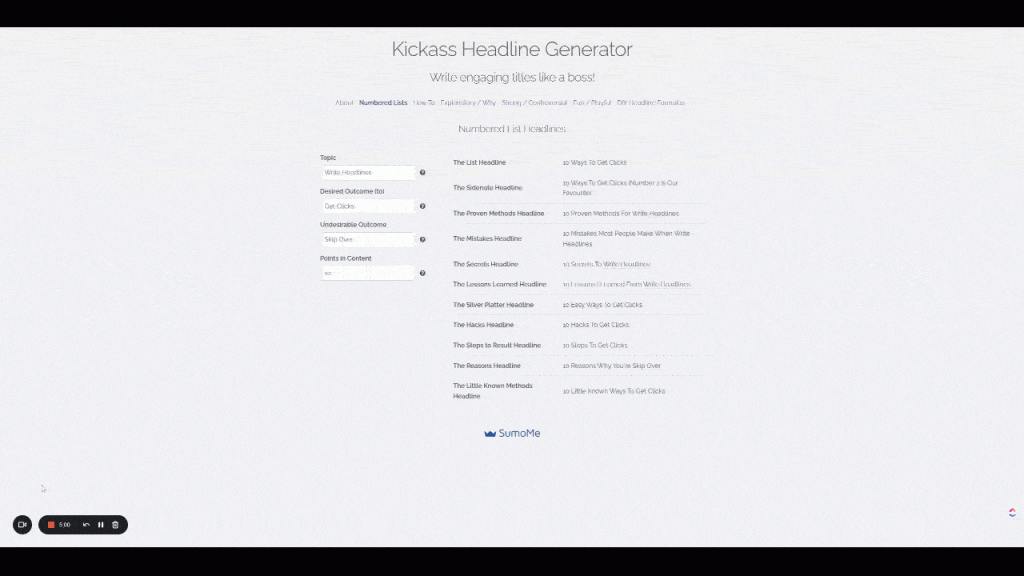
The amount of ideas you can get out of this tool is insane. I tried to summarise it but never managed to give it enough credit.
So I recorded a GIF to show you how powerful this tool can be in headline and idea generation.
I used this tool to write the headline of this article; if that doesn’t speak of the powerfulness of the headlines it generates, I’m not sure what does.
The last tool I looked at was Fatjoe’s headline generator. Let’s see how it faired against the competition.
FatJoe’s headline generator
The tool is user-friendly and does what other tools do, which is fair since they’re all headline generators.
It’s much nicer than Hubspot’s; that’s a fact because it gives more than just four, and it uses different formulas for each one of the headlines.
It doesn’t give you a ready-to-use headline out of the gate, but if you play around with it, you will get excellent ideas that you can convert into click-worthy headlines.
Here are some of the headlines it generated when I gave it “headlines” as a seed keyword.
- 10 Celebrities Who Should Consider a Career in Headlines
- 10 Wrong Answers to Common Headlines Questions: Do You Know the Right Ones?
- Will Headlines Ever Die?
- The Headlines Case Study You’ll Never Forget
- 10 Things You Learned in Kindergarden That’ll Help You With Headlines
- 15 Hilarious Videos About Headlines
- Why We Love Headlines (And You Should, Too!)
- 10 Best Mobile Apps for Headlines
- 10 Things We All Hate About Headlines
- What’s Holding Back the Headlines Industry?
As you can see, some of the headlines it generated are perfectly useable, while others are just nonsense, so you’ll have to add your touch here.
Remember to Test Your Headlines
People think that A/B testing is mainly done for websites and designs, but testing out headlines is a big thing regarding content.
It’s so big that The NewYork Times has a tool that a/b tests out which headline gets the most clicks and display the winner to everyone.
They present 2 headlines for the same article on their homepage, 50% see one while 50% see the other.
The headline with the most clicks becomes the headline that every visitor sees without them doing anything manually.
It’s brilliant because as humans, we tend to be biased towards our creations, so we might think that the headline we created is good, but the readers see otherwise.
Wordstream wrote a blog named “7 Things We Learned from 31 Days of A/B Headline Testing” that goes over interesting findings they uncovered.
They used a system to rate all of the headlines they had written from 1 to 100, and to their surprise, their most performing headlines weren’t the highest rated ones.
And that’s why it’s really important to always A/B test your headlines because sometimes you might be bottlenecking your blog by having an average headline.


